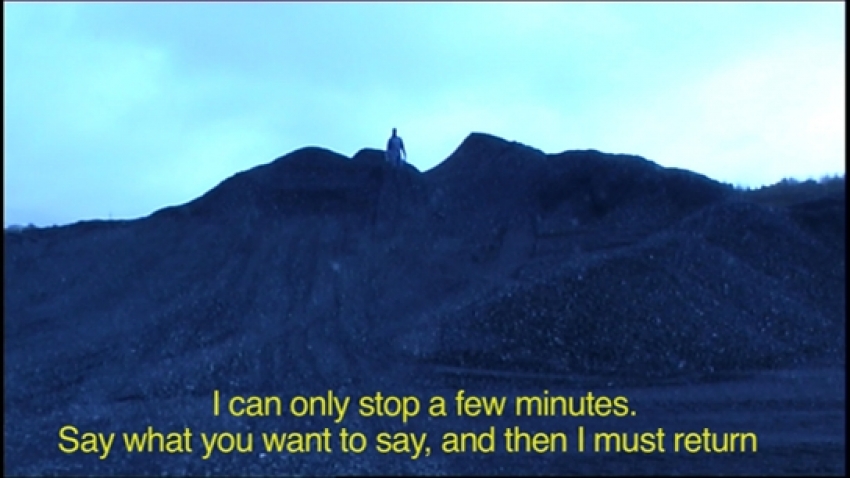
Brian Duggan
O'Machine O'Machine/ Three Thousand and Nine and The Measure Digital Film
Taking a short text by E. M Forster called The Machine Stops which was written in 1909, the text is an amazing snapshot of an imagined future. The Machine Stops is about a mother and son who live at opposite ends of the globe and who now live underground with the rest of the earth population communicating only via an internet precurser. The story foretells inventions and norms which exist in todays contemporary society.The quarry as site refers to the quarry as the birthplace for the physical development of urban Fingal. Tarmac for its roads, concrete bricks and blocks for houses and amenities all come from this unique landscape. The quarry reflects not only the physical but the depth of the layers which are central to the make up of society. The quarry landscape in itself has a remote, other worldly topographical appearance, perhaps, moon like, with an almost sci fi style cinematic quality i.e The Man Who Fell to Earth from 1976 which starred David Bowie.The project combines and exploration of Fingal in Film and a short story collection.
This 96 page pocket size book is a revisualisation of the future in the year three thousand and nine. It contains new commissioned fiction by the artist and three new writers, Daniel Boland, Niamh MacAlister, and Pauline O'Hare. These stories were selected from an open call and selected by the artist, the arts office and John Banville. The book also contains an afterword by Francis McKee curator and director of the CAA Glasgow which accounts a short contemporary history of the origins of science fiction in Ireland.
O'Machine O'Machine Part One: Three thousand and nine. Publication of new writing and O'Machine O'Machine Part two: The Measure. Digital Film, Film running time 19:06, Widescreen 16:9. French with English subtitles.
O'Machine O'Machine Part One: Three thousand and nine. Publication of new writing.
O'Machine O'Machine Part Two: The Measure. Digital Film, Film running time 19:06, Widescreen 16:9. French with English subtitles.
The Measure maps a curious journey by two characters through a 44km topographical section of Fingal in north Dublin, using samples from a number of sources including E.M. Forster's 1909 short novella The Machine Stops as a guide. Starting on one end on Colt Island, Skerries and the other at the Huntstown quarry, specific landmarks from Fingal ground the story in tangible fixed points but without fixing the time. The Huntstown quarry in north Dublin is where much of the film is set, and the film took place within a greater context of the boom in Ireland collapsing over the course of the 3 years when the film was made. However the film doesn't explicitly address this, but more considers 'post and pre-something' scenarios within a disjointed but coherent narration.
As the story develops the narrator brings forth multiple tales from underground cities, lost connections, desires and dreams from the past, and for the future. On closer listening we begin to hear multiple narrative strands weaving in and around contemporary circumstances. In some lights a melancholic search for a connection between two characters, searching a strange depopulated land, society is absent, either by design or after an event. A kaleidoscope of elements has informed this new digital film, from Nicholas Roeg's The man who fell to earth, and Walkabout, the Poet W.H. Auden, the letters of Vincent Van Gogh, E.M. Forster`s The Machine Stops and the black and white 1966 BBC series of the same name. The fractured nature of the piece finds a resolution of sorts, in a dramatic sequence in the largest quarry in Dublin.
The film was screened in the Silogue Watertower on the M50 and again at Draiocht, Balnachardstown which included the artist in conversation with Francis McKee
A limited number of publications are available through the arts office and available to purchase on www.amazon.co.uk and www.blurb.com.
For more information please contact Caroline Cowley, Public Art Co-ordinator by email or phone 01 870-8449
A compressed edit of the film can be viewed here.